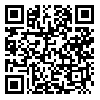Volume 9, Issue 36 (2012)
LIRE 2012, 9(36): 51-76 |
Back to browse issues page
Download citation:
BibTeX | RIS | EndNote | Medlars | ProCite | Reference Manager | RefWorks
Send citation to:



BibTeX | RIS | EndNote | Medlars | ProCite | Reference Manager | RefWorks
Send citation to:
Pain or Cure: Pathology of the Application of Literary Theory in Contemporary Researches. LIRE 2012; 9 (36) :51-76
URL: http://lire.modares.ac.ir/article-41-4632-en.html
URL: http://lire.modares.ac.ir/article-41-4632-en.html
Abstract: (7205 Views)
Interest and attention to literary theories such as structuralism, modern hermeneutic, genealogy etc is to the extent these days that a large number of contemporary literary articles and researches take into account one of these theories. These can be traced even in articles and works of traditional teachers (not only the works of young researchers).
Although such attention to these theories cannot be without a reason, however, their applications have always not helped to resolve problems and on a number of occasions it was found that what must have been a cure, turned to be a pain itself. It seems that the actual reason of the attention to those theories is their strength and capacity highlight a hidden angle that could not be shown by traditional approaches i.e. the approaches of great personalities like Minavi. Ghazvini, Iqbal. However, various reasons that caused the application of these theories are not only proved unprofitable rather these are pains themselves along with other pains. These reasons include: a) lack of exact and correct identification of theories, b) heedless to historical and cultural bed where these
theories grew and took shapes, c) ignoring realities, d) incorrect selection of theories (theories are diverse and plenty hence, one cannot seek profit applying one theory for every topic) and e) weakness in composition of theories
Although such attention to these theories cannot be without a reason, however, their applications have always not helped to resolve problems and on a number of occasions it was found that what must have been a cure, turned to be a pain itself. It seems that the actual reason of the attention to those theories is their strength and capacity highlight a hidden angle that could not be shown by traditional approaches i.e. the approaches of great personalities like Minavi. Ghazvini, Iqbal. However, various reasons that caused the application of these theories are not only proved unprofitable rather these are pains themselves along with other pains. These reasons include: a) lack of exact and correct identification of theories, b) heedless to historical and cultural bed where these
theories grew and took shapes, c) ignoring realities, d) incorrect selection of theories (theories are diverse and plenty hence, one cannot seek profit applying one theory for every topic) and e) weakness in composition of theories
Subject:
Child literature
Received: 2012/09/20 | Accepted: 2012/11/21 | Published: 2012/12/2
Received: 2012/09/20 | Accepted: 2012/11/21 | Published: 2012/12/2
| Rights and permissions | |
 |
This work is licensed under a Creative Commons Attribution-NonCommercial 4.0 International License. |






